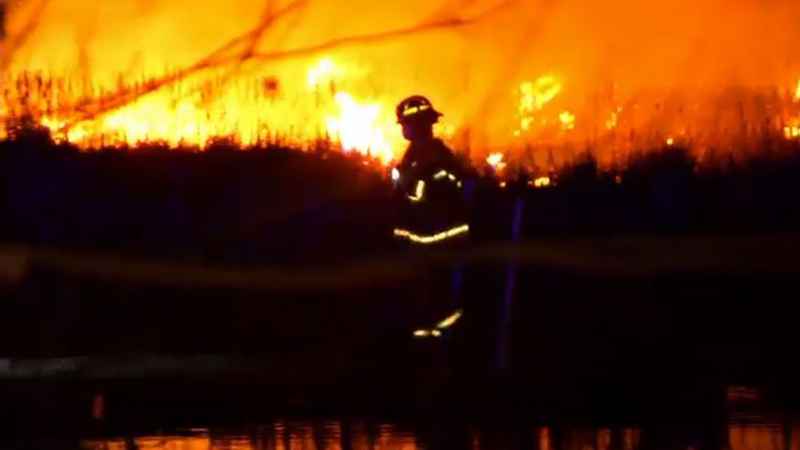Dry vegetation, high winds contributing to elevated fire risk in Minnesota
[anvplayer video=”5018924″ station=”998122″]
The cattails on either side of the dock at Veterans Park in Richfield are completely singed, and the people who saw the fire burn Friday night say it spread quickly.
Winds reached close to 40 mph, and even surrounded by swampland, the grass in the park still burned. Fortunately, the park structures weren’t ruined and nobody was hurt.
The wind was much calmer Saturday, but the dry vegetation that acted as fuel is still out there. KSTP Meteorologist Jonathan Yuhas says fires like the one that burned in Richfield aren’t uncommon — even without the wind.
"It’s still a concern because we have very dry vegetation," Yuhas said. "That vegetation after the winter snowfall here just dries out and it’s fuel for these fires. And particularly around small ponds is where we see a lot of this, in the marshy areas."
According to the Minnesota Department of Natural Resources, most of the entire state is currently considered at "high risk" for fires, and the southern part of the state — including the Twin Cities metro — is considered at "very high" risk.

A firefighter walks past the scene of a brush fire Friday, April 2, 2021, at Veterans Park in Richfield.[KSTP]
However, that risk is expected to go down in the days and weeks ahead, according to Yuhas.
"As it gets warmer over the next couple days here, we’re going to see things green up, and as things green up, there’s moisture inside that green and then we don’t see these fires this way," Yuhas said.
To prevent fires, officials urge people to be cautious when disposing of cigarette butts and to make sure they’re fully extinguished. Burning brush is not advised, either, especially on windy days.